Fallopia japonica
One of the most invasive plants in the world, this weed was introduced to the US in the 1970s from Asia
Fallopia japonica Japanese knotweed
Add to MyPlants View Locations
Although the flowers of this large herbaceous perennial plant may be said to be somewhat attractive, this plant is placed among the worst invasive species in our area, and has the official status of an invasive weed in Pennsylvania. It is native to Eastern Asia, but has become widespread in temperate regions of North America, Europe and other parts of the world. Japanese knotweed can now be found in 39 of the 50 states of the United States and in six provinces of Canada. It is found in most counties of Pennsylvania and has spread so fast that the official information is probably outdated.
The plant has a hollow reddish-brown stem and periodic nodes that resemble bamboo. It is a member, however, of the buckwheat family. Although it is not related to bamboo, it is often called Japanese bamboo. It can grow up to 12 feet tall in a single growing season and often resembles a large shrub. The fairly large leaves are triangular in shape with truncated bases. This species grows rapidly and with great strength. Its roots have been known to damage concrete foundations, buildings, flood control defenses, and retaining walls. It often grows along streams and can narrow the channels so much that it can cause flooding. The many shoots and branches can completely choke out other vegetation. The white or cream-colored flowers bloom in late summer and early autumn and are small. They are produced in erect racemes 2.5 to 6 inches long.
This invasive is nearly impossible to eliminate, but does die back during the winter. It tolerates a wide range of soil types, and its rhizomes can survive temperatures as low as -31 F. The rhizomes grow very deep and even removal by excavation can be extremely difficult. Even if cut back at the surface, new shoots will quickly grow from the root system. Herbicides sometimes work as a control measure, especially in late summer or fall. One trial in Canada showed that spraying the plants with salt water showed promising results. A type of plant louse and a leaf spot fungus have also been used in some areas as an experimental control measure. The large elongated clusters of small white or cream flowers are of some value to beekeepers as they provide nectar at a time of year when other flowers may not be blooming.
The related giant knotweed is a larger plant with heart-shaped leaves. Both species are edible. Some towns have given up on efforts to eliminate the plant and instead hold knotweed festivals to emphasize the uses of the plant as food or source of useful raw materials. Studies have been conducted in Japan to identify potential predators and diseases that could be used to control Japanese knotweed elsewhere.
Habitat & Range
Stream & river banks, roadsides, waste areas.
Range: Temperate regions of North America, Europe and other parts of the world.
Wetland code: FACU
Phenology
Flowers July through August.
Fallopia japonica Japanese knotweed
Synonyms: Polygonum cuspidatum, Reynoutria japonicaAdd to MyPlants View Locations
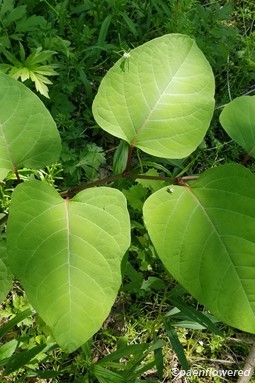


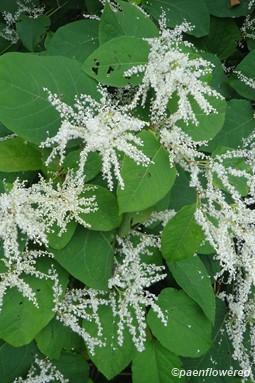
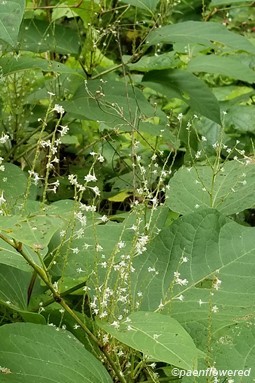
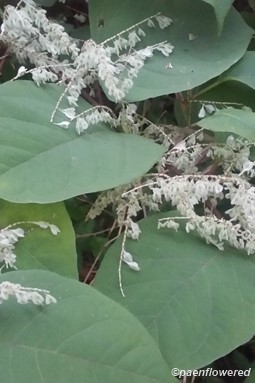
.jpg?v=638487996260000000)
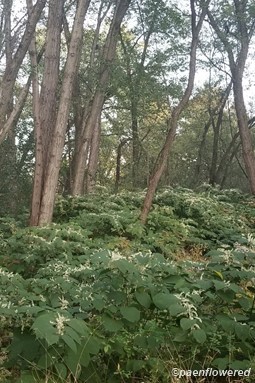






Comments
Have you spotted this plant in your area? We'd love to hear about your experience! Share your comments or questions about the plant below. Comments are moderated before posting.